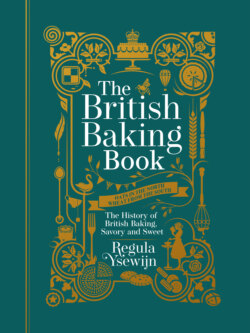Читать книгу The British Baking Book - Regula Ysewijn - Страница 58
На сайте Литреса книга снята с продажи.
ОглавлениеSimnel cake
62
The simnel cake has a rather mysterious origin. The name could derive from simile conspersa, which means “fine
flour” in Latin. But England wouldn’t be England if she didn’t try to make it a more romantic tale. In 1838, a story
appeared in an English newspaper entitled “The Sim-Nell” or “The Wiltshire Cake.” Simon and Nelly were an old
couple arguing at Easter about what to do with a surplus of dough. Simon thought that the dough should be baked in a
mold, while Nelly thought it should not be baked, but cooked on the stove top. To prevent further quarrelling, the old
couple came to a compromise, cooking the cake first on the stovetop, and then baking it!
Another story became legend when the recipe for simnel cake appeared in a poem. In addition to the recipe, the
poem says that the cake should be brought to your mother in mid spring. This inspired the legend that simnel cake
was cooked by maids who were allowed to go home on Mother’s Day. The cake was apparently made from the rich
ingredients found in the household of the maid’s employer. Today, in England, simnel cakes are still baked around
Easter and especially on Mother’s Day.
It’s true that 17th-century references show that the cake was indeed first cooked and then baked, which was later
forgotten because ovens became more reliable. The rich ingredients have remained, such as the candied skin of fruits,
currants, and sometimes saffron. The marzipan is also an important ingredient, and the 11 marzipan balls symbolize
the 12 apostles, minus Judas.
